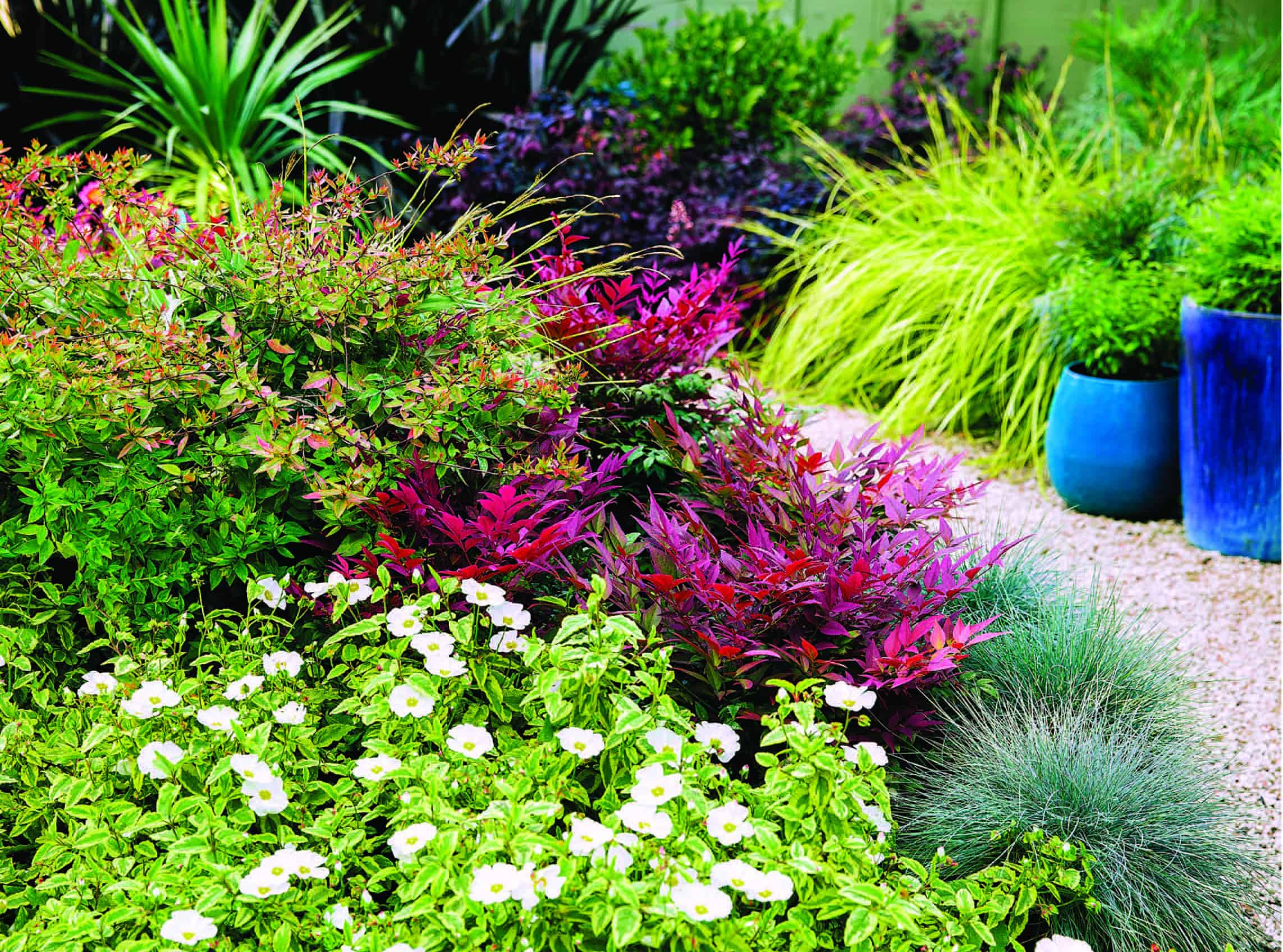The edges and borders around flower beds, footpaths and other parts of the lawn and garden are often the hardest spaces to manage. Living on the edge is one way to deal with that problem—using live plants along those edges, that is.
Edges and borders can help define spaces, guide foot traffic, lead the eye to a garden feature, screen unattractive areas and provide a transition zone into larger garden spaces.
While fences, walls, metal strips, landscape timbers, stones, bricks, mulches and similar non-living materials can be used to establish borders, one of the best options is to use living plants. A living border is not only beautiful to behold, it can be easy to maintain if the right plants are used and if they are installed correctly.
To plan a border, first think about the sunlight and soil conditions of the border area. Is it shady or sunny, dry or moist?
• Next think about how that area will be viewed. Will it only be seen from one side or serve as a foreground for larger plants, a wall or fence? Or will it surround a space and be viewed from all sides? Use this information to pick the size and shape of the plants you’ll use in the border.
Plant options are numerous. Shrubs, perennials, annuals, ground covers and grasses are all great choices. You can aim for a lovely evergreen border, a colorful mix of flowering plants or you can mix and match herbaceous and woody plants or annuals and perennials together in a border.
• Once you pick the plants and general border theme, delineate the border area. This may not be necessary if the border is to be located along an already defined area, such as a walkway or around an existing garden bed. However, if you are establishing a new border, simply use a hose or rope to outline the area. Using these flexible tools allows you to create soft, curving lines that make borders seem much more natural and soft.
• When the border shape and size is decided, use a water-based paint or chalk to outline the area, then remove any grass or other plants from that space. If possible, dig a trench along the area at least four and up to eight inches deep and add soil amendments such as compost and other organic mulches to improve the soil in that area.

Position the plants at a spacing that allows them room to grow without crowding them or looking too sparse. Do a little research to find out the mature size of the plants to help with this placement.
Golden foliage plays a major part in the border. Variegated Cistus corbariensis ‘Little Miss Sunshine’ forms a golden mound in the foreground, where it covers itself with cheerful white flowers in spring. Clumps of blue fescue (Festuca glauca ‘Beyond Blue’) to its right cool the heat of the red-tinged Nandina domestica ‘Obsession’ and bronze-tinged Abelia ‘Kaleidoscope’. Across the path, brilliant Carex oshimensis ‘Everillo’ and blue pots filled with Nandina domestica ‘Lemon-Lime’ cool things off a bit. At the very back is an imposing Phormium ‘Black Adder’.
Mixing and matching these and other plants, including bulbs, trees and annuals, with other landscaping materials, such as river rock or pavers, is an opportunity to be wildly creative in the garden. So go ahead, live on the edge!
To browse the entire Sunset Western Garden Collection, click here.
